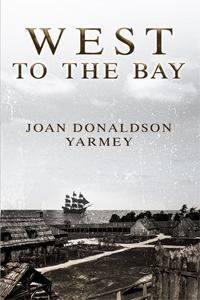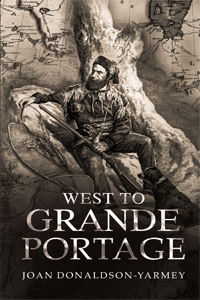https://books2read.com/West-to-the-Bay-Yarmey
Review: A delving into history and the Hudson Bay Company. Tells the story of one young man Thomas and his experiences after leaving his home to travel to the New World. Full of adventure and history. I enjoyed the book and the ease of reading.
Review: I have visited Churchill on the Hudson Bay and this book took me back 300 years to what it was like? A good read cannot put it down
https://books2read.com/West-to-Grande-Portage-V2
Review: This book was exactly what I needed to read. It took me away to a completely different world in another time. I followed along, very intrigued by the detail Ms. Donaldson provided about Quebec and the voyageurs of the 1700s all the while creating a very compelling story. I loved this book so much that I immediately began West to the Bay after I finished it. I look forward to reading more and more of Ms. Donaldson's stories.
Book Reviews
Book reviews are very important for writers especially in today’s flooded book world. In the past there were traditional publishers, and a few writers who self-published, who send their new releases to book reviewers working on the newspapers. The reviewers would then read them and write reviews for the public. Or the publisher sent the manuscripts (ARCs) to other authors before the book was published and would get a review to add to the front of the book.
But things have changed drastically. While the big five publishers still do a lot of the publicizing and marketing, the smaller publishers are now requiring their authors to take over that job. With the Internet making self-publishing cheap and easy, there are a lot more books on the market. So this is why reviews are so important—authors need readers to tell others why they should read that particular book. And most of that is done on Amazon. The algorithms on Amazon don’t care how long or what was said in the reviews, they just look at the number of reviews. The more reviews, the higher up the book is placed.
Unfortunately, many readers seem reluctant to leave a review. And there are many reasons for that. They think they have to write a long one giving some of the storyline. But that’s not necessary. All they have to say is that they liked the book and hoped the author was writing another. Some get busy and forget or they don’t think their opinion is important. Also, if they didn’t like the book or it wasn’t what they expected, they feel a little uncomfortable leaving a three star or less review. But, just because one person didn’t like the subject of the book, that doesn’t mean the next person will think the same way. Liking or disliking a book is subjective. And, hopefully, readers realize that when they look at the reviews of a book they are interested in.
So, it has become necessary for authors to actively ask for reviews. Publishers and self-published authors now add a note at the end of the book reminding the reader to leave a review. Also, writers who send out newsletters prompt readers to go into their book’s Internet site and write a quick assessment of the story.
Even though this way of getting reviews is all free it does seem like a lot of work and seldom pays off. In the end, some authors opt for another way to get reviews, and that is to pay for them. There are businesses that accept books for review and authors can submit their work to them. But it costs and some charge up to $450.00. The questions I have about this are: Is this ethical; does it mean that the more you pay the better the review; does this give the reader a true, objective opinion of the story and of the writing?
The thing is that it is easy for readers to leave a review of my, or any author’s, books on Amazon. And you don’t have had to purchase it through Amazon. Just go to the book’s Amazon page, scroll down to review this product, select the number of stars you give it, and click on the write a customer review button. You can write as many or as few words as you wish.
Just a note: if you are a friend of the author on any social media, Amazon may reject your review and may even delete previous reviews left by other readers.

%20(1).jpg)
.jpg)






















